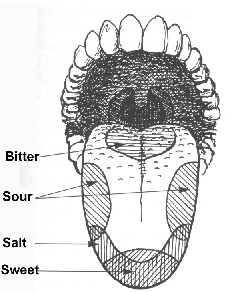|
|
June 1998 Volume 21,
Issue 6 Food and Beer pairing
by Lisa Gros
The beer drinking public,
I think, has progressed from quaffing a few pints with a
buddy at your local watering hole to trying to match the
beer to bring out the best in what your eating. This
seems to be a natural progression as the diverseness and
the quality of beer available increases.
But as we become more
adventurous in trying to match beer to food, it would be
helpful to have a road map to the basic principles of
beer and food pairing. Unfortunately, there is not a lot
written in this area, unlike for wine where the
literature is rich and diverse. I do believe that some of
the same principles, however, can be applied to beer and
food. What I will attempt to do is put forth a series of
articles which aims at developing a road map for beer
connoisseurs to use.
Wine and food pairing has
developed over the years from a pretentious set of rules
to a more dynamic set of guidelines. It use to be that
when one asked what kind of wine should be served,
invariable the response would be red wine for red meat
and game; white wine for white meat, mainly chicken and
fish. Pork – the other white meat – could go
either way depending on the way it was served. Today this
approach is rather simplistic and considered too
constraining. The color of the wine is not as important
as the characteristics of the wine and the food. For
instance, a rich complex cabernet is not the best wine to
match with a halibut in a white wine sauce. Stands to
reason, since the cabernet is too intense and would over
power the mild and delicate flavor of the fish. However,
you can pair, quite successfully, salmon with a light
bodied red wine. The point is that color is not the
determining factor in matching wine to food, but rather
the characteristics of the wine – taste, aroma,
complexity, weight etc. This is true for beer as well.
Color, as I am sure you all know, says very little about
a beer and, in fact, even within the same color range
there is a large variance in alcohol, hops, and malt
character. But as with wine, the general rule and
understanding is a good guide for us. White wine and
lighter colored beers will, in general, be less complex
(especially in terms of malt complexity) than red wines
and darker colored beers.
Many physiologists believe
that there are four basic flavor components: salt, acid,
sweet, and bitter. They say that these flavors are not
perceived all at once, nor do all flavors last equally as
long. The figure diagrams the flavor zones. Sweetness is
perceived at the front of the tongue; it is logical,
therefore, that sweetness is the first of the four
flavors to be perceived. However, it is also said to not
last as long as the other flavors. Saltiness and acidic
flavor are said to be perceived next and are said to last
longer then sweetness. Bitterness is perceived at the
back of the tongue, and it is not surprising to beer
drinkers that it is perceived last and the longest of all
the flavors.
In addition to the timing
and duration of the flavors, they also interact with each
other. For instance, have a sip of your favorite IPA.
Note the level of bitterness. Now ask the bartender for
some pretzels and have a few. When you try the IPA again,
the bitterness should be more intense. This is because
the saltiness reinforces the perception of bitterness.
Acidity masks bitterness, although only briefly, and it
enhances the perception of sweetness. This may be why
Italians like to sprinkle balsamic vinegar on their
strawberries. Conversely, sweetness decreases the
impression of acidity. Sweetness also decreases the
impression of saltiness and bitterness. Take a
barleywine, for example. The bitterness is balanced and
smoothed by the sweetness. Lastly, bitterness reduces
acidity.
These basic guidelines
will be very important in the next article where we look
at matching food with beer. We will try to balance the
four flavors in each course.
| A schematic
depiction of a tongue. The labeled regions show
where taste buds that detect chemicals associated
with certain tastes are clustered. These
locations are only approximate and, undoubtedly,
vary slightly from person to person. |
 |
|